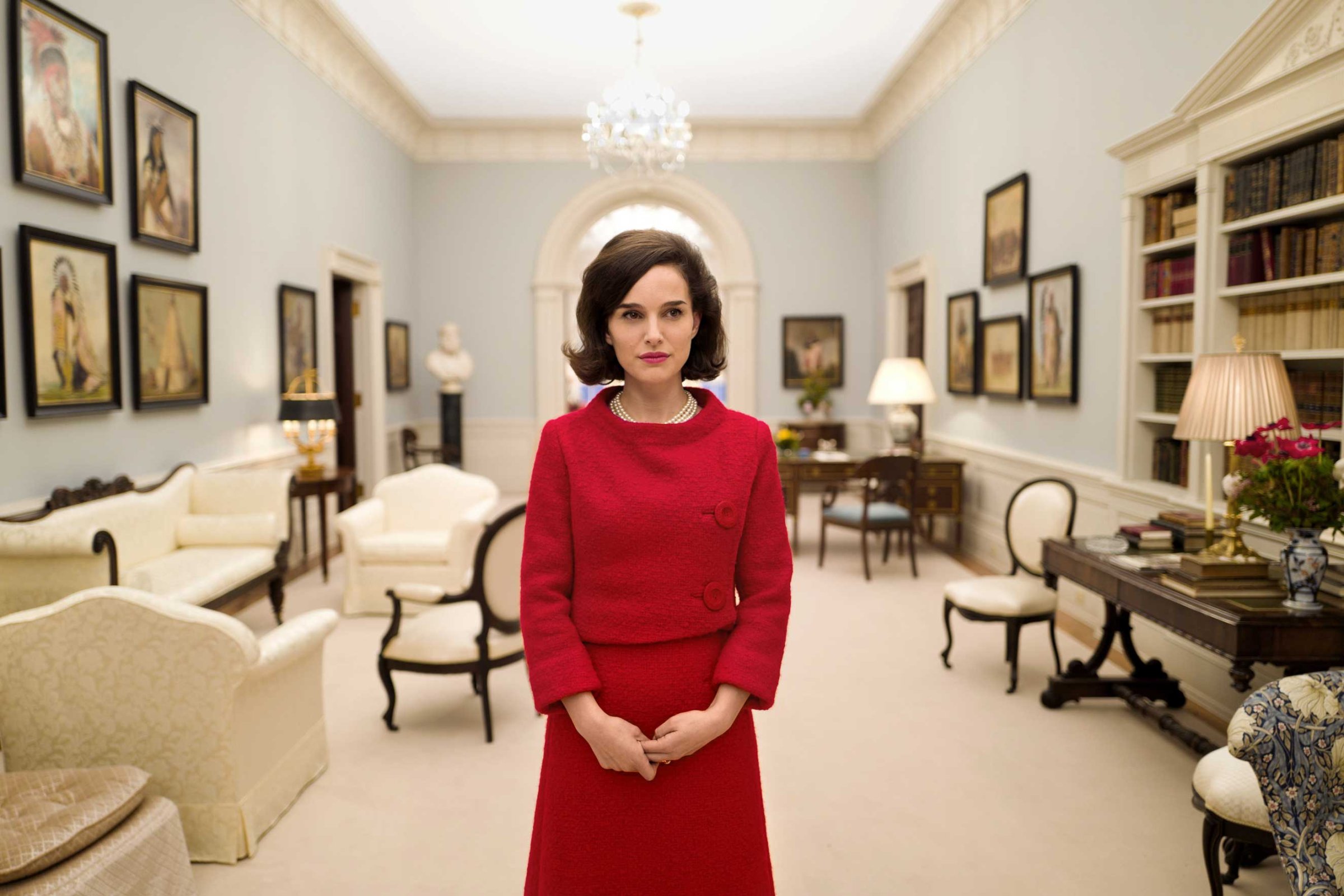
Chilean director Pablo Larraín (The Club, No) is a passionately political filmmaker, unafraid to tangle with explosive issues in his home country and unsparing in his placement of the occasional grisly detail. In Jackie, he turns his sights on America, and on the experience of one very public figure who shrank from the public’s gaze. Natalie Portman plays Jacqueline Kennedy in the days following the assassination of John F. Kennedy, an event that obviously shook the world. But what did it mean for her?
Larraín and Portman pose some possible answers. As the widowed First Lady recounts the events of Nov. 22 and their aftermath to a journalist (a Theodore White stand-in played by Billy Crudup), Larraín dramatizes them: she explains her desire to give her husband the most beautiful and respectful funeral possible, using that of Abraham Lincoln as a model. She also relays graphic details of how her husband died. Larraín depicts the moment, at first discreetly and then graphically.
But where’s the line between a sensitive work of imagination and an invasion of real-life grief in the service of arty filmmaking? There’s a lot of clever technique in Jackie, like its canny, razor-precise editing. But there’s also something arch and distant about the picture. Portman tries to portray this most enigmatic figure as frosty, inscrutable and vulnerable, but the performance comes off as calculating and mannered. In one scene, the dazed, grief-stricken widow drifts through the private living quarters she had shared with her husband, slipping in and out of stately gowns and cocktail dresses, blurring her feelings with cigarettes and alcohol while Richard Burton sings “Camelot” in the background. It’s a beautifully constructed sequence, but it throws off a voyeuristic sheen. The real-life Jackie guarded her privacy graciously but fiercely. Jackie strips her down and puts her on display. In its cool appraisal, it renders her more specimen than human being.
More Must-Reads From TIME
- The 100 Most Influential People of 2024
- The Revolution of Yulia Navalnaya
- 6 Compliments That Land Every Time
- What's the Deal With the Bitcoin Halving?
- If You're Dating Right Now , You're Brave: Column
- The AI That Could Heal a Divided Internet
- Fallout Is a Brilliant Model for the Future of Video Game Adaptations
- Want Weekly Recs on What to Watch, Read, and More? Sign Up for Worth Your Time
Contact us at letters@time.com